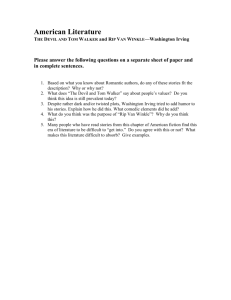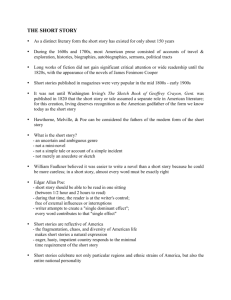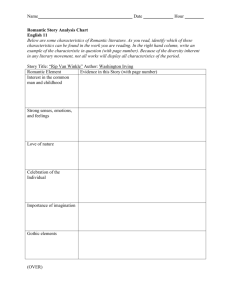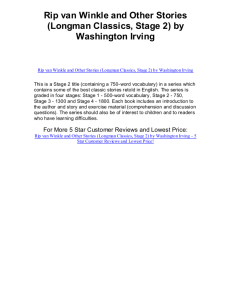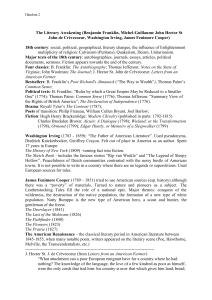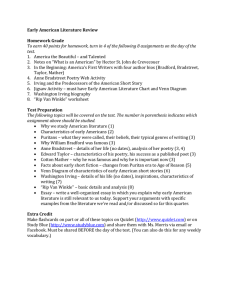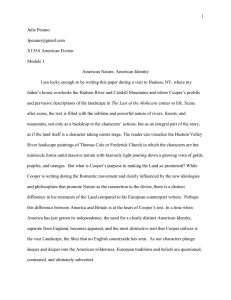Washington Irving and James Fenimore Cooper Discussion Washington Irving
advertisement
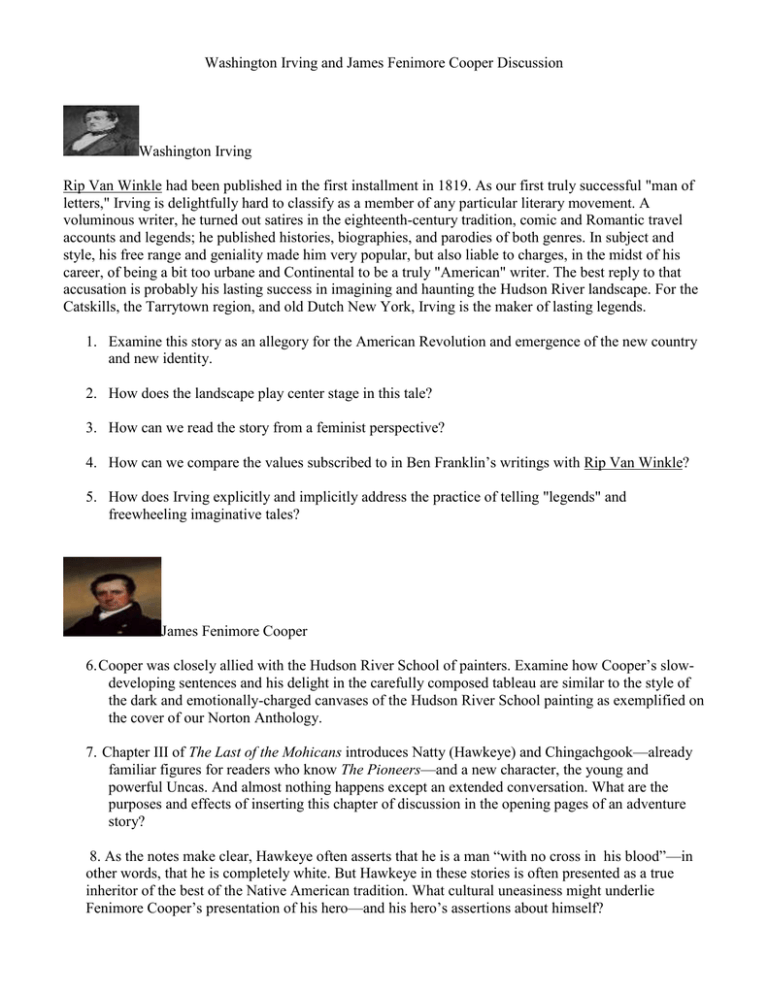
Washington Irving and James Fenimore Cooper Discussion Washington Irving Rip Van Winkle had been published in the first installment in 1819. As our first truly successful "man of letters," Irving is delightfully hard to classify as a member of any particular literary movement. A voluminous writer, he turned out satires in the eighteenth-century tradition, comic and Romantic travel accounts and legends; he published histories, biographies, and parodies of both genres. In subject and style, his free range and geniality made him very popular, but also liable to charges, in the midst of his career, of being a bit too urbane and Continental to be a truly "American" writer. The best reply to that accusation is probably his lasting success in imagining and haunting the Hudson River landscape. For the Catskills, the Tarrytown region, and old Dutch New York, Irving is the maker of lasting legends. 1. Examine this story as an allegory for the American Revolution and emergence of the new country and new identity. 2. How does the landscape play center stage in this tale? 3. How can we read the story from a feminist perspective? 4. How can we compare the values subscribed to in Ben Franklin’s writings with Rip Van Winkle? 5. How does Irving explicitly and implicitly address the practice of telling "legends" and freewheeling imaginative tales? James Fenimore Cooper 6. Cooper was closely allied with the Hudson River School of painters. Examine how Cooper’s slowdeveloping sentences and his delight in the carefully composed tableau are similar to the style of the dark and emotionally-charged canvases of the Hudson River School painting as exemplified on the cover of our Norton Anthology. 7. Chapter III of The Last of the Mohicans introduces Natty (Hawkeye) and Chingachgook—already familiar figures for readers who know The Pioneers—and a new character, the young and powerful Uncas. And almost nothing happens except an extended conversation. What are the purposes and effects of inserting this chapter of discussion in the opening pages of an adventure story? 8. As the notes make clear, Hawkeye often asserts that he is a man “with no cross in his blood”—in other words, that he is completely white. But Hawkeye in these stories is often presented as a true inheritor of the best of the Native American tradition. What cultural uneasiness might underlie Fenimore Cooper’s presentation of his hero—and his hero’s assertions about himself?
